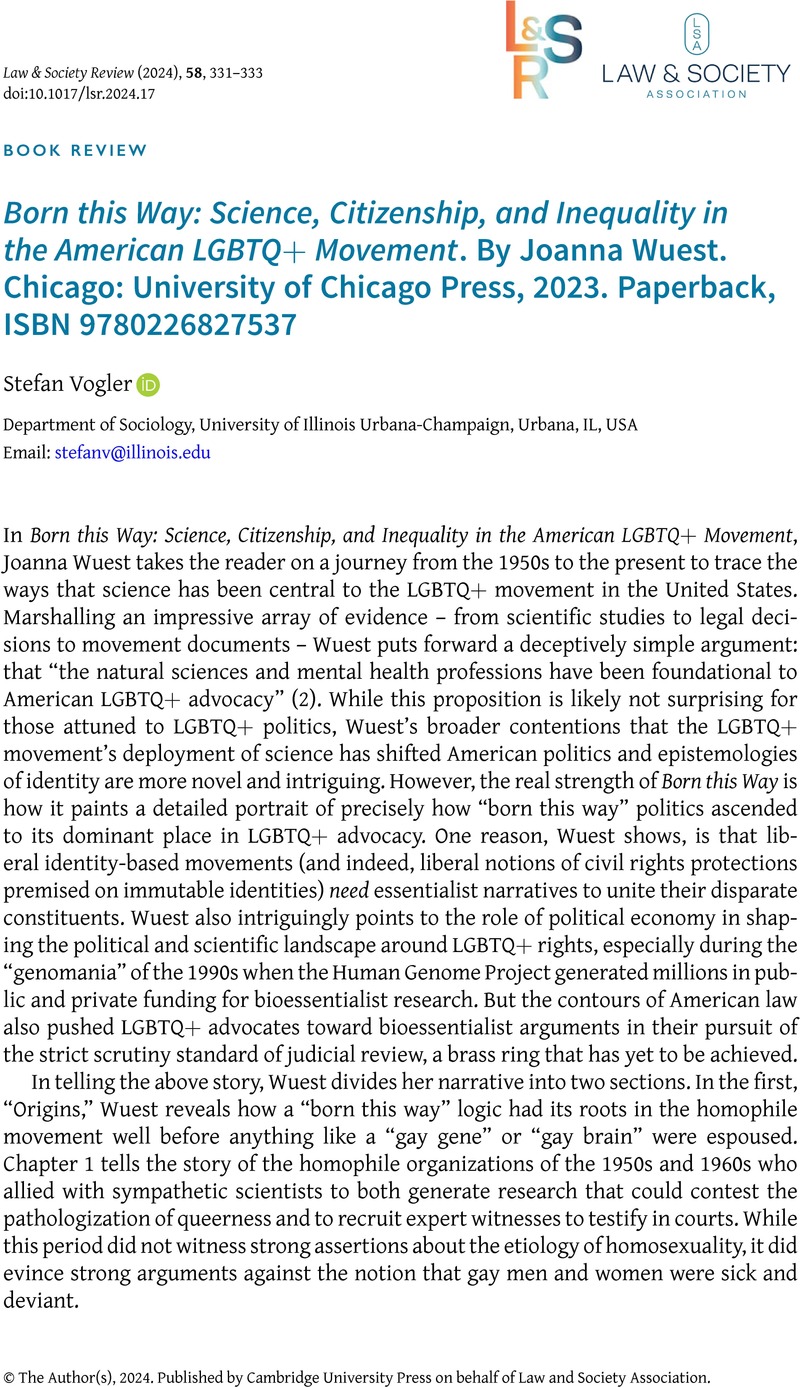No CrossRef data available.
Article contents
Born this Way: Science, Citizenship, and Inequality in the American LGBTQ+ Movement. By Joanna Wuest. Chicago: University of Chicago Press, 2023. Paperback, ISBN 9780226827537
Review products
Born this Way: Science, Citizenship, and Inequality in the American LGBTQ+ Movement. By Joanna Wuest. Chicago: University of Chicago Press, 2023. Paperback, ISBN 9780226827537
Published online by Cambridge University Press: 10 May 2024
Abstract
An abstract is not available for this content so a preview has been provided. Please use the Get access link above for information on how to access this content.

Information
- Type
- Book Review
- Information
- Copyright
- © The Author(s), 2024. Published by Cambridge University Press on behalf of Law and Society Association.


